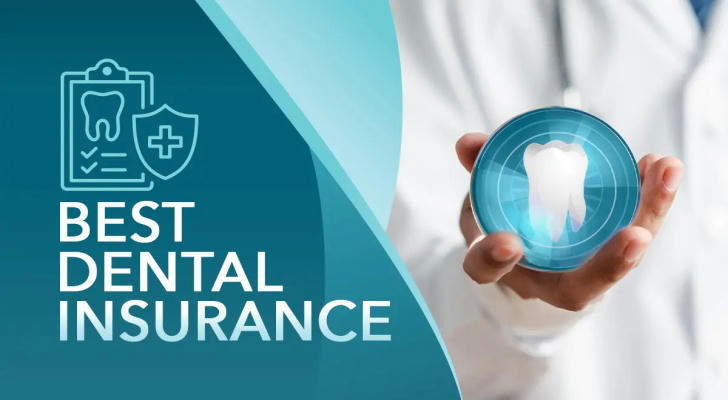Understanding Dental Insurance What You Need to Know

Dental insurance plays a crucial role in maintaining oral health and managing the costs associated with dental care. With the right plan, you can alleviate financial burdens and ensure access to necessary treatments. This article will guide you through the essentials of dental insurance, helping you make informed decisions about your oral health coverage.
What is Dental Insurance?
Dental insurance is a type of insurance designed to cover a portion of the costs associated with dental care. Unlike general health insurance, which often covers a wide range of medical services, dental insurance typically focuses on preventive care and specific dental treatments. Understanding how dental insurance works can help you navigate your options effectively.
Types of Dental Insurance Plans
Preferred Provider Organization (PPO)
PPO plans offer flexibility in choosing your dentist. They have a network of preferred providers, but you can also see out-of-network dentists, albeit at a higher cost. These plans often cover a significant portion of preventive services, making them a popular choice for many individuals and families.
Dental Health Maintenance Organization (DHMO)
DHMO plans emphasize preventive care and require members to choose a primary dentist from their network. While these plans usually have lower premiums and no deductibles, they may limit your options for specialists and require referrals for certain treatments.
Dental Discount Plans
Unlike traditional insurance, dental discount plans do not provide reimbursement for services. Instead, members pay an annual fee to access discounted rates at participating dentists. These plans can be beneficial for those who prefer lower upfront costs and greater flexibility in choosing providers.
Managed Fee-for-Service Plans
These plans combine elements of traditional fee-for-service insurance with managed care principles. They typically offer more extensive coverage than DHMO plans but may require members to follow specific guidelines to receive full benefits.
Key Terms to Understand
To navigate dental insurance effectively, it's essential to familiarize yourself with some key terms:
Premium: The monthly cost of maintaining your dental insurance plan.
Deductible: The amount you must pay out-of-pocket before your insurance begins to cover expenses.
Coinsurance/Copayment: The percentage or fixed amount you pay for services after meeting your deductible.
Annual Maximum: The maximum amount your insurance will pay for covered services within a year.

Evaluating Your Dental Insurance Needs
Before selecting a dental plan, assess your personal or family dental health needs. Consider how often you visit the dentist and the types of treatments you may require in the future. Prioritizing preventive care coverage can help you maintain good oral health while minimizing costs.
How to Choose the Right Plan
When selecting a dental insurance plan, consider the following factors:
Cost vs. Coverage Balance: Evaluate the premiums, deductibles, and out-of-pocket costs against the coverage provided.
Provider Network Availability: Ensure that your preferred dentist is in-network or consider how much it would cost to see an out-of-network provider.
Coverage for Specific Services: Check if the plan covers orthodontics, major procedures like crowns or bridges, and other specialized treatments.
Comparing different plans will help you find one that aligns with your needs and budget.
Understanding Coverage Limits and Exclusions
Every dental insurance policy comes with its own set of limits and exclusions. Common exclusions may include cosmetic procedures (like teeth whitening) or certain treatments not deemed medically necessary. Reading through policy details carefully can help you avoid surprises when seeking treatment.

Utilizing Dental Insurance Effectively
To maximize your dental benefits:
1.Schedule Regular Checkups and Cleanings: Taking advantage of preventive care is crucial. Most dental insurance plans cover routine checkups and cleanings at little to no cost. Regular visits help catch potential issues early, reducing the likelihood of needing more extensive (and costly) treatments later.
2.Understand How to File Claims or Appeal Denied Claims: Familiarize yourself with the claims process outlined by your insurance provider. If a claim is denied, don’t hesitate to appeal. Gather necessary documentation and communicate clearly with your insurance company to resolve any issues.
3.Keep Track of Your Annual Maximum: Most dental plans have an annual maximum limit on what they will pay for covered services, typically ranging from $1,000 to $2,000. Be aware of this limit and monitor your expenses throughout the year to ensure you make the most of your coverage before it resets.
4.Utilize Predetermination of Costs: For significant treatments, consider submitting a treatment proposal to your insurance provider for predetermination. This process allows you to understand what costs will be covered before undergoing treatment, helping you plan financially.
5.Plan Treatments Wisely: If you anticipate needing multiple procedures, coordinate with your dentist to schedule them strategically within the same benefit year. This approach can help you maximize your coverage and minimize out-of-pocket expenses.
6.Explore Alternative Payment Options: If your dental needs exceed your coverage limits, inquire about financing options or payment plans offered by dental practices. Many clinics provide flexible payment solutions that allow you to manage costs over time.
7.Stay Informed About Exclusions and Limitations: Each dental insurance policy has specific exclusions and limitations that can significantly impact coverage. Common exclusions include cosmetic procedures and certain major treatments. Understanding these limitations will help you avoid unexpected costs when seeking care.
8.Consider Supplemental Insurance or Discount Plans: If your primary dental plan has significant gaps in coverage, look into supplemental insurance or dental discount plans that can provide additional savings on necessary treatments.
Real-Life Example
Maria is a young, healthy 24-year-old who experiences a sudden toothache due to a cracked tooth while enjoying her favorite snack. After visiting her dentist, she learns that she requires a root canal followed by a crown—an unexpected but necessary procedure that could cost over $1,500 without insurance.Fortunately, Maria has a PPO dental plan that she pays $200 annually for as part of her employer's benefits package. Her plan covers 100% of diagnostic services (like X-rays) and 50% of major procedures such as root canals and crowns after her deductible is met.
In total, Maria pays $900 out-of-pocket instead of the full $1,800 she would have incurred without insurance—saving her $900 due to her proactive choice in selecting an appropriate dental plan.
Conclusion
Understanding dental insurance is vital for making informed decisions about your oral health coverage. By familiarizing yourself with different types of plans, key terms, and how to evaluate your needs, you can select a policy that best suits you and your family. Regularly reviewing your options as circumstances change will ensure that you continue to receive optimal care without breaking the bank. Prioritize your oral health today by choosing the right dental insurance plan!
